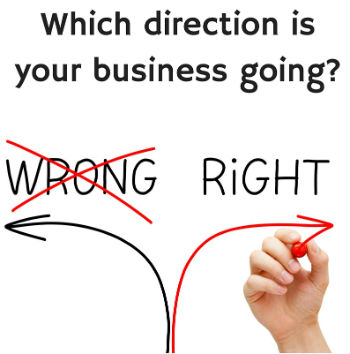Starting a Small Business the Right Way
 If I ever start a business again, I will do so many things differently. You learn a lot when you start a small business from scratch; both what to do and what not to do. A lot of what you learn about starting and running a small business comes from the school of hard knocks. In hindsight, the act of starting a business is a much easier task than moving forward when you are in the weeds of actually starting up. Here is my advice on how to start a business the right way.
If I ever start a business again, I will do so many things differently. You learn a lot when you start a small business from scratch; both what to do and what not to do. A lot of what you learn about starting and running a small business comes from the school of hard knocks. In hindsight, the act of starting a business is a much easier task than moving forward when you are in the weeds of actually starting up. Here is my advice on how to start a business the right way.
Legal Set Up
The legal formation of your small business is an area where many new owners try and skimp. Do not go what appears to be the cheap and easy route. When starting a business, I have heard this phase more often than not: “I don’t need a lawyer, I’m just going to form an LLC.” Sure, this approach is easy and simple, but believe me, involving a good small business lawyer right from the get-go is worth every penny.
There is a lot more to the legal aspects of starting a business than just the entity formation. In addition to the entity formation, you will want your lawyer to help develop employee and customer contracts. Both of these contracts are completely necessary even if you don’t have employees or customers at the beginning. These types of contracts will save you so much time and worry! Plus, they are completely necessary when you start. Additionally, you may want a lawyer to assist you in developing an employee handbook. While all of these may seem like big business necessities, believe me, they are crucial to your small business as well.
Organizational Chart And Job Descriptions
Another item that seems too “corporate” for a small business is the development of an organizational chart and job descriptions. It seems silly when you are a one-person show to develop an organizational chart since you have to do all of the jobs yourself. However, as you scale your business up, your organizational chart will prove to be a valuable asset. Your org chart can help you visualize where you are going. It also makes it easier to identify what positions you need to hire for and when to do so.
Job descriptions are so important, but too often they are not developed or utilized by the small business owner. Job descriptions make it very clear to new hires what their responsibilities are and what tasks they should not be working on. If each new hire is given a job description and shown how they fit into the business on the organizational chart, the greater the chance that they will be successful. Employees who understand how they fit in and what their responsibilities are will be more likely to help you complete your vision.
Payroll And Benefits
If you are going to hire employees, then get real right from the beginning. Don’t just hire them as contractors because it is easier. First of all, if they are only working for you, it is likely that they are an employee and not an independent contractor. You want to develop a competitive wage and benefits package so that you attract the very best employees. Nothing makes you look like more of a rookie than hiring and paying people as contractors because it is easier for you to handle. It is important to get help in this area. I am a firm believer that every small business should outsource their payroll for a number of different reasons. Most important is that an outsourced payroll company will handle the filing of your payroll taxes and assume the liability if they are filed late or incorrectly. Many outsourced payroll companies can also offer Human Resources services, which is another area where you really need someone with expertise.
Incentive Plans
Let me know if this sounds familiar: you hired your first few employees and they just don’t care about the business as much as you would like. If that rings true with you, imagine switching places with your employees and asking yourself, "Why should I care?" Do you have a good incentive plan in place for your employees? It is not enough to just pay your employees a salary and give them a competitive benefits package. While these things help, they may not be enough of an incentive to get your employees to do what is best for the company.
Throwing money at your employees is rarely the solution either. Find out what your employees really want by asking them. Maybe they want more responsibility and not to be micromanaged. Possibly your employees want a more flexible schedule so they aren’t married to the business 9-5. Develop an incentive plan that makes your employees love working for the business.
Business Processes
Developing and maintaining a set of detailed processes is essential to the scalability of your business. Each position should develop a manual for that particular position in the business. Having business processes in place makes growing much easier because if you lose an employee due to them quitting or you terminating or promoting them, it will be easier to plug another employee into that position if there is a set of procedures that they can follow. Each position all the way up to and including the CEO should be documented and made replaceable. If anyone on the org chart can’t step out of the business at any time without there being a major disruption, you have a big problem. It is sick to think about, but just imagine if you die one hour from now; will the business suffer or thrive? Business processes also make executing an exit plan possible as it will be much more attractive to a potential buyer than a business that is disorganized and lacking processes.
Exit Planning
My last piece of advice is to develop an exit plan. This really should be at the top of my list because I believe that developing an exit plan is one of the very first things you should do. Like the old saying goes: Start with the end in mind.
Not having an exit plan in place is dangerous because you really don’t have any idea where you are going. Your daily actions as a business owner and those of your staff should all support your exit plan. Without an exit plan, there is no definitive direction for growth or any idea of when you should get out of the business. Your exit plan will definitely change as your business evolves, so be prepared to revamp it and change the direction of your business. You should review your exit plan every 6 to 12 months to make sure you still agree with what you have in place for an exit.
What other advice do you have for starting a small business the right way from the very beginning?


Comments